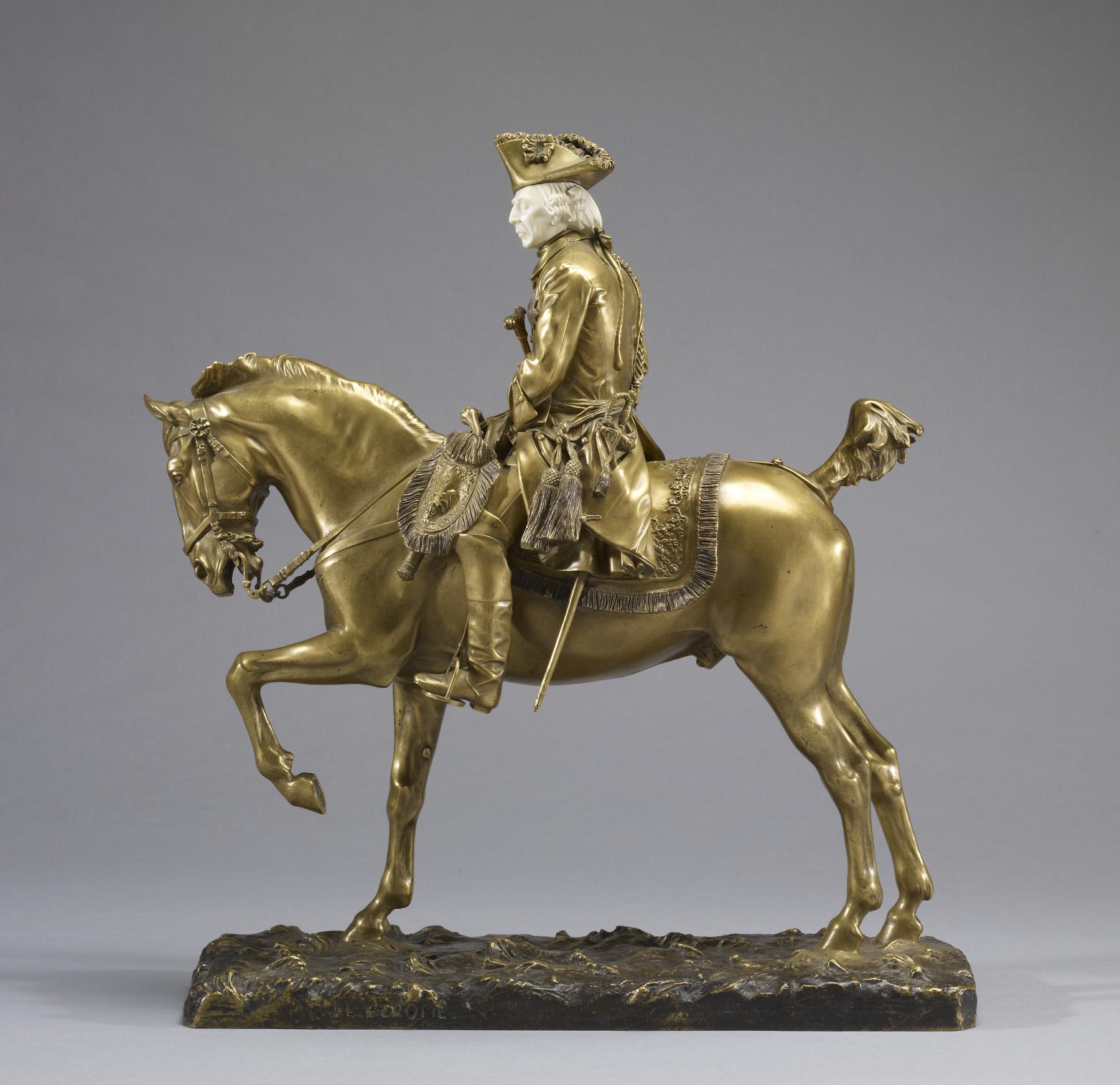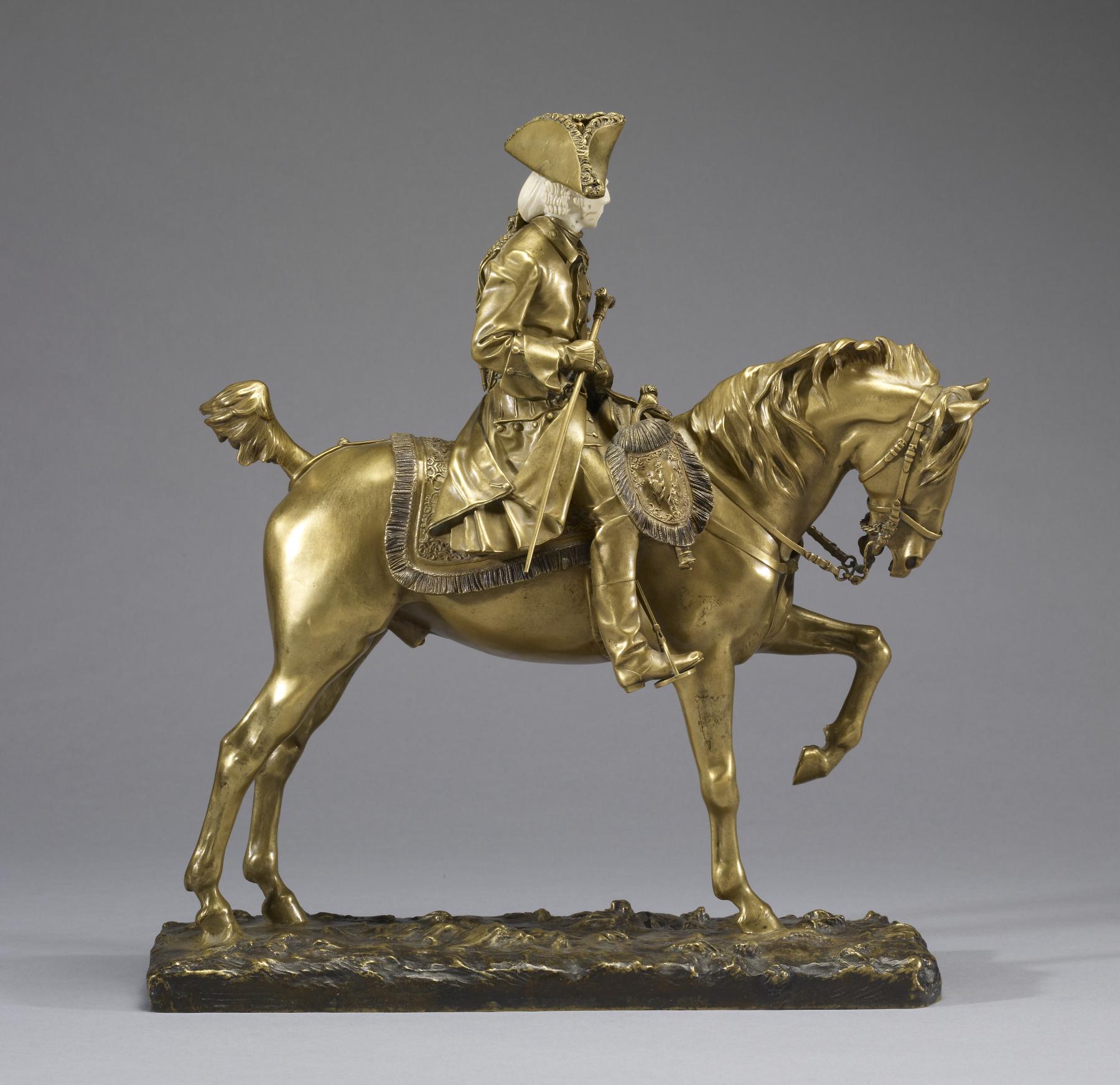Frederick the Great
(18th and 19th Centuries )
Although Gérôme is best known as a painter he was also a sculptor, and his paintings and three dimensional works are often closely related. This equestrian statuette was first shown at the salon of 1899. It is also known in a gilt bronze version, without the addition of an ivory head. Two plaster versions are also known. This version was cast by Soit-Decauville.
From the late 1890s, Gérôme began work on a series of equestrian portraits of historical figures from antiquity through to the 19th century. In addition to this piece, the artist also sculpted Bonaparte entering Cairo (1897), Tamerlane (1898), Caesar crossing the Rubicon (1900), and George Washington (1901). All displayed careful attention to the detail of the finishing of fabrics, fringe, and other regalia.
Inscription
Provenance
Provenance (from the French provenir, 'to come from/forth') is the chronology of the ownership, custody, or location of a historical object. Learn more about provenance at the Walters.
Sale, Sotheby's, London, June 21 1991, Lot 131; purchased by Dr. Edward T. Wilson, Bethesda, MD, June 21 1991; given to Walters Art Museum, 2019.
Geographies
France (Place of Origin)
Measurements
H: 15 3/4 × W: 14 3/16 × D: 4 3/4 in. (40 × 36 × 12 cm)
Credit Line
Gift of Dr. Edward T. Wilson, 2019
Location in Museum
Not on view
Accession Number
In libraries, galleries, museums, and archives, an accession number is a unique identifier assigned to each object in the collection.
In libraries, galleries, museums, and archives, an accession number is a unique identifier assigned to each object in the collection.
54.3124








